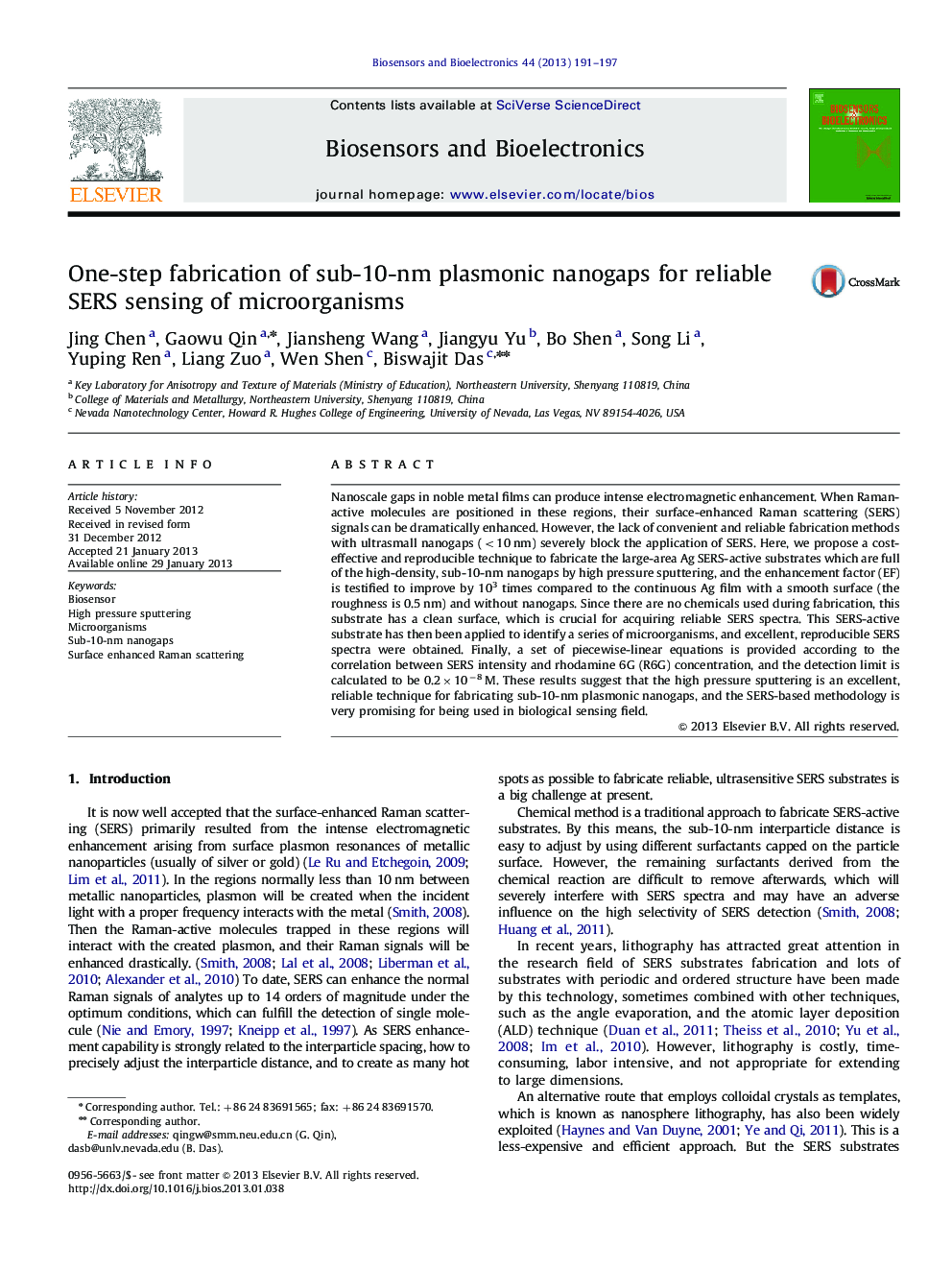| Article ID | Journal | Published Year | Pages | File Type |
|---|---|---|---|---|
| 866913 | Biosensors and Bioelectronics | 2013 | 7 Pages |
Nanoscale gaps in noble metal films can produce intense electromagnetic enhancement. When Raman-active molecules are positioned in these regions, their surface-enhanced Raman scattering (SERS) signals can be dramatically enhanced. However, the lack of convenient and reliable fabrication methods with ultrasmall nanogaps (<10 nm) severely block the application of SERS. Here, we propose a cost-effective and reproducible technique to fabricate the large-area Ag SERS-active substrates which are full of the high-density, sub-10-nm nanogaps by high pressure sputtering, and the enhancement factor (EF) is testified to improve by 103 times compared to the continuous Ag film with a smooth surface (the roughness is 0.5 nm) and without nanogaps. Since there are no chemicals used during fabrication, this substrate has a clean surface, which is crucial for acquiring reliable SERS spectra. This SERS-active substrate has then been applied to identify a series of microorganisms, and excellent, reproducible SERS spectra were obtained. Finally, a set of piecewise-linear equations is provided according to the correlation between SERS intensity and rhodamine 6G (R6G) concentration, and the detection limit is calculated to be 0.2×10−8 M. These results suggest that the high pressure sputtering is an excellent, reliable technique for fabricating sub-10-nm plasmonic nanogaps, and the SERS-based methodology is very promising for being used in biological sensing field.
► SERS substrates with high-density of sub-10-nm nanogaps were fabricated by high pressure sputtering in one-step. ► We demonstrate the reliability and reproducibility of this clean substrate which has no remaining chemicals. ► Excellent SERS spectra of four kinds of microorganisms were acquired. ► By introducing sub-10-nm nanogaps, the SERS substrate enhancement factor is improved by 103 times. ► Piecewise-linear relationship exists between the SERS intensity and the rhodamine 6G concentration.
